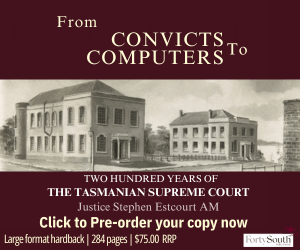Whether the type of co-ownership of real property is joint tenancy or tenancy in common, disputes can arise between co-owners when one person wishes to sell the property to a third party and the other does not.
The ideal situation is the co-owners enter into discussions and reach an agreement to sell the property without the need for court intervention, of course, but where that does not occur, what can a co-owner do to still sell the property in Queensland?
In Queensland, the relevant statutory provisions are found in Division 2, Part 5 of the Property Law Act 1974 (Qld) (the Act). Section 38 of the Act provides a mechanism for one or more co-owners in a co-ownership to apply to the court to obtain orders for trustees to be appointed upon a statutory trust for sale to sell the property subject to any encumbrances over the whole property but free from encumbrances affecting an individual co-owner’s interest.
The proceeds of sale are then to be divided among the co-owners in shares that reflect their interest in the property, subject to any encumbrances, costs, expenses and outgoings.1
Application for statutory trust for sale
‘Co-ownership’ is defined in section 37 of the Act and means ownership, at law or in equity, in possession by two or more joint tenants or tenants in common. The phrase ‘in possession’ is limiting and prevents, for example, co-owners who hold a contingent interest from making an application under section 38 of the Act. It is also important to note that an applicant must be a co-owner at the time the application is made.
Other examples of co-owners include executors holding the property in trust for beneficiaries under a will,2 or an encumbrancee where the encumbrance is of the interest of an individual joint tenant or tenant-in-common (see below for further discussion on encumbrances). Conversely, the courts have held a lessee is not a co-owner with the lessor,3 because co-owners must collectively have the entire fee simple at law or in equity.4
What does a co-owner need to establish?
Crucially, sub-section 38(1) of the Act provides that the court may make an order for sale of the property; meaning the granting of the order is discretionary. However, subject to any relevant pre-existing legal or equitable right, there is no express provision in the Act that grants the court a general jurisdiction to refuse making an order. Applications are therefore determined on a case-by-case basis.
In Simonidis Steel Lawyers Brisbane Pty Ltd v Johnston [2015] QSC 81, McMurdo J (as he then was) held that: “It is well established that the power under section 38 although a discretionary power is usually exercised where the Court is asked to do so by a co-owner because of the importance of the section 38 remedy as an element of the co-owner’s proprietary interest.”
His Honour referred to McPherson J (as he then was) who said: “Where there is no trust or perhaps other fiduciary obligation it is difficult to conceive of circumstances in which the discretion, if any conferred by the word ‘may’ in section 38(1) of the Property Law Act or its New South Wales equivalent, would ever be exercised against the appointment of statutory trustees.”5
As already noted, the court may refuse to grant a statutory trust for sale if doing so would be inconsistent with existing legal or equitable rights beyond co-ownership. Examples may include property dealt with by partnership agreement, property subject to an existing trust or fiduciary obligation, or an entitlement to an equity of exoneration.6
In summary, there is no general defence,7 and subject to any pre-existing trust or other fiduciary obligation, the court is likely to grant the application.
Appointment of trustees: What are their rights and obligations?
Upon application, the court may order the appointment of trustees to hold the property on statutory trust for sale. In circumstances where the whole of the property is already held by trustees, sub-section 38(2) of the Act provides that they will be appointed as the trustees under the application unless the court determines otherwise. On the other hand, pursuant to sub-section 38(3) of the Act, a co-owner may be appointed as trustee where the whole property is vested in co-owners at law.
Once appointed, trustees owe the usual duties and obligations that attach to trustees and should a) conduct themselves with the diligence and prudence of a prudent business person conducting their own business; b) treat beneficiaries equally; c) obtain a valuation of the property prior to sale; d) act as expeditiously as possible to sell the property, and e) obtain the best possible price for sale.
Trustees are also required to consult with beneficiaries entitled to the income of the property until sale and give effect to the wishes of beneficiaries who hold an interest in more than half of the income, subject to the general interest of the trust.8 To satisfy this requirement, trustees should provide any relevant information to the beneficiaries and wait for, and consider, any response.9
Pursuant to section 37A of the Act, costs of the trustees can be paid from the proceeds of sale.
When does the property vest in the trustees?
Once the court orders the appointment of trustees for the sale, at what point does the property then vest in the trustees at law and equity? There are three potentially relevant statutory provisions that relate to this question.
First, sub-section 38(1) of the Act expressly states that the court may appoint trustees and vest the subject property in those trustees for the purpose of sale. This provision appears to answer the question: upon court order, the property vests in the trustees. This position is supported by sub-section 90(1) of the Trusts Act 1973 (Qld), which provides that where the court makes a vesting order, the subject property vests in the named persons without the need for any conveyance, transfer or assignment.
However, pursuant to section 110A of the Land Title Act 1994 (Qld), a request to vest may be lodged to vest an interest in a lot in a trustee. Upon first glance, this section appears to contradict the proposition that property vests in a trustee upon court order. It is unclear as to whether this is required for statutory trusts created pursuant to section 38 of the Act, and in the absence of any authority on the issue, the prevailing view is that the property vests immediately upon court order.10
Once the property vests in the trustees, the co-owners no longer have an interest in the land including any caveatable interest and lose their right to possession. Unless otherwise directed by the court, the co-owners’ interest becomes the proceeds of sale.11
What is the effect of encumbrances on sale?
Often, properties are subject to encumbrances such as mortgages. Schedule 6 of the Act defines ‘encumbrance’ to include a “mortgage in fee or for a lesser estate or interest, and a trust for securing money, and a lien and a charge of a portion, annuity or other capital or annual sum”.
If a mortgage is granted over the whole of the property, in the absence of consent from the mortgagee or redemption of the mortgage, the property vests in the trustees subject to the mortgage.12 In such circumstances, the property would be sold and the mortgage paid out from the proceeds, with title passing to the purchaser unencumbered by that mortgage.
Alternatively, as noted above, where a mortgage is granted over the interest of a single co-owner, the property vests in the trustees unencumbered. In effect, the sub-section allows the court to order the mortgagee to discharge the mortgage. However, this does not operate to defeat a mortgage over an undivided share because a ‘co-owner’ is defined in section 37 of the Act to include an encumbrancee, which entitles such a mortgagee to apply to the court for an order vesting property in the statutory trust for sale and ultimately, the realisation of its security.13
Can a co-owner purchase the property at sale?
It may be the case that one or more of the co-owners wish to purchase the property at sale. Sub-section 40(1) of the Act allows the court to grant permission to a co-owner to purchase the property at auction or otherwise. However, the Act also prevents that co-owner from acting as trustee in connection with the sale without leave of the court.14
In conclusion, where co-owners cannot agree to sell a property or to terminate a joint tenancy or tenancy-in-common, one or more co-owners may apply to the court pursuant to Part 5, Division 2 of the Act to have trustees appointed to a statutory trust for sale of the property. Such a step has been described as the “pre-eminent statutory remedy to resolve disputes between co-owners”.15
In the absence of any inconsistent, pre-existing legal or equitable rights, the court is likely to exercise its discretion grant an application made under section 38(1) of the Act.
Disclaimer: This article is intended to be a general summary of the law and should not be viewed as a comprehensive coverage of all potential legal issues arising from the subject matter and does not constitute nor should it be construed as legal advice.
Footnotes
1 Property Law Act 1974 (Qld) s37A.
2 Re Gray [1994] 1 Qd R 583.
3 Re Marcellos (1940) 41 SR (NSW) 154.
4 Darrington v Caldbeck (1990) 20 NSWLR 212.
5 Ex parte Eimbart Pty Ltd (1982) Qd R 398, 402.
6 Anne Wallace, Michael Weir and Les McCrimmon, Real Property Law in Queensland (Thomson Reuters, 5th ed., 2020) 265, 266.
7 Fleming v Fleming [2016] QSC 215 [11].
8 Property Law Act 1974 (Qld) s39(1).
9 Dixon v Roy (1991) 5 BPR 11.
10 Anne Wallace, Michael Weir and Les McCrimmon, Real Property Law in Queensland (Thomson Reuters, 5th ed, 2020) 269; Re Della-Franca’s Caveat [1993] 1 Qd R 382, 387.
Additional reading
11 Property Law Act 1974 (Qld s38(7); Re Della-Franca’s Caveat [1993] 1 Qd R 382.
12 Property Law Act 1974 (Qld) s38(1).
13 Bunnings Group Ltd v Asden Developments Pty Ltd [2014] 1 Qd R 493 [47], [48].
14 Property Law Act 1974 (Qld s40(2).
15 Anne Wallace, Michael Weir and Les McCrimmon, Real Property Law in Queensland (Thomson Reuters, 5th ed., 2020) 267.
Legislation
Land Title Act 1994 (Qld)
Property Law Act 1974 (Qld)
Trusts Act 1973 (Qld)
Cases
Bunnings Group Ltd v Asden Developments Pty Ltd [2014] 1 Qd R 493
Darrington v Caldbeck (1990) 20 NSWLR 212
Dixon v Roy (1991) 5 BPR 11
Ex parte Eimbart Pty Ltd (1982) Qd R 398
Fleming v Fleming [2016] QSC 215
Re Della-Franca’s Caveat [1993] 1 Qd R 382
Re Gray [1994] 1 Qd R 583
Re Marcellos (1940) 41 SR (NSW) 154
Simonidis Steel Lawyers Brisbane Pty Ltd v Johnston [2015] QSC 81
Other
Wallace, Anne, Michael Weir and Les McCrimmon, Real Property Law in Queensland (Thomson Reuters, 5th ed, 2020).
Michael Thomson is a Barrister with Fullagar Chambers. michaelthomson@qldbar.asn.au









Share this article